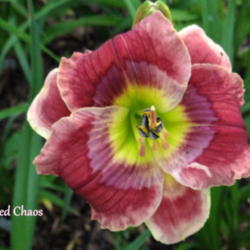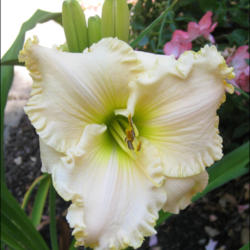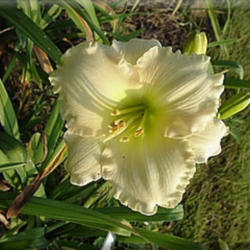As a veteran of this wonderful plant, I can offer this advice to beginner growers or those who know nothing at all about growing daylilies.
There are basically 3 classifications of daylilies: dormant, semi-evergreen and evergreen. Dormants are most generally grown in the north and semi-evergreens and evergreens are grown in the south. You can experiment and grow all 3 types if you wish. Some evergreens and semi-evergreens do just fine for me and I grow quite a few of them. Others may need some mulch to protect them from winter kill.
Daylilies are one of the easiest of all perennials to grow. When I first got into daylilies 20-plus years ago, I was quite fussy with them. I pampered them to death and tended to overwater all of my new acquisitions, resulting in some loss from crown rot. The longer I grew them, the less fussy I became.
Planting Your Daylily:
Depending on where I purchase my daylilies and how far they have traveled to get to my house, I first like to soak the roots in water with a little water-soluble fertilizer in it. I usually soak a plant for 2 to 3 hours before planting. If the plant arrives extremely dried out, I will soak it overnight. To prepare the hole for planting, I dig a hole, preferably in a sunny location because daylilies love the sun. I make the hole large enough to spread the roots out comfortably. I am a composter, so I always add a bit of compost and water to the hole before planting. If you have a lot of clay soil, as I do, make sure you do add some soil amendments. I mound up some dirt inside the hole and spread the daylily roots over the mound. I then cover the roots, making sure that the crown of the daylily is not planted too deep. The crown is where the green plant material meets the roots. I then top dress with some milorganite and a slow-release type fertilizer, such as Osmocote.
Caring for Daylilies:
Daylilies need at least an inch of water a week. Then they will perform wonders for you. As I mentioned earlier, I was very exuberant when I first started growing daylilies and thought they needed an inch of water a day. Unfortunately, that caused me to lose several plants to crown rot. I have found over the years that daylilies are very adaptable to all climates and one should never fuss with them. I have had all kinds of weather challenges, from extreme amounts of rain to drought, and they have bounced back just fine. Please bear in mind, however, that in extreme drought conditions, they should be given more water to keep the plants from becoming stressed.
I have not had too many issues with insects or rust in my garden, as some of our southern growers have. The most common insects affecting daylilies are thrips and spider mites. I have had thrips a few times and have found them easy to control with Neem Oil. I have also had daylily rust a few times on a few cultivars, but our winters here in the north are cold enough to kill the spores and prevent any rust from spreading.
Happy gardening!!!


